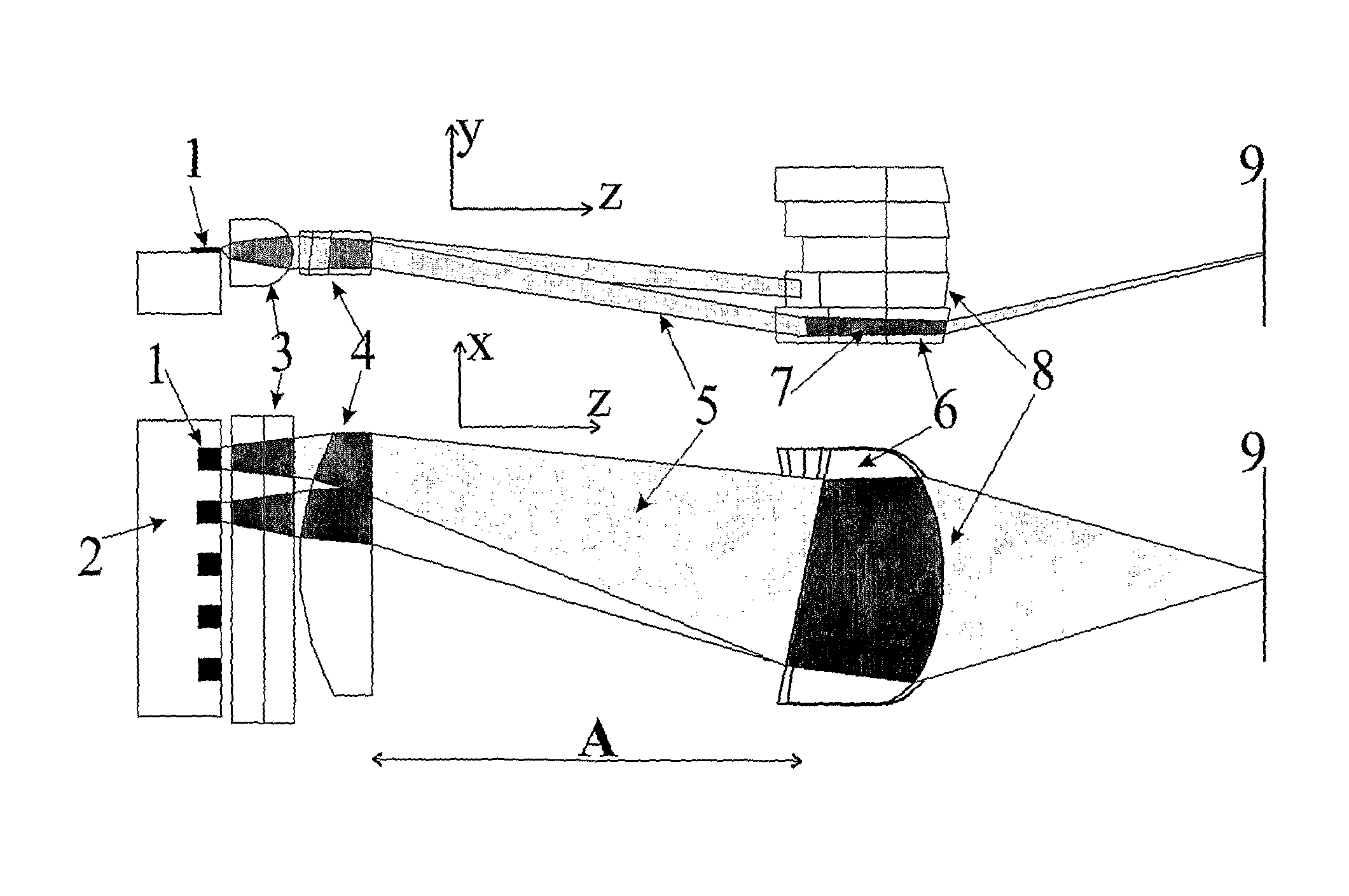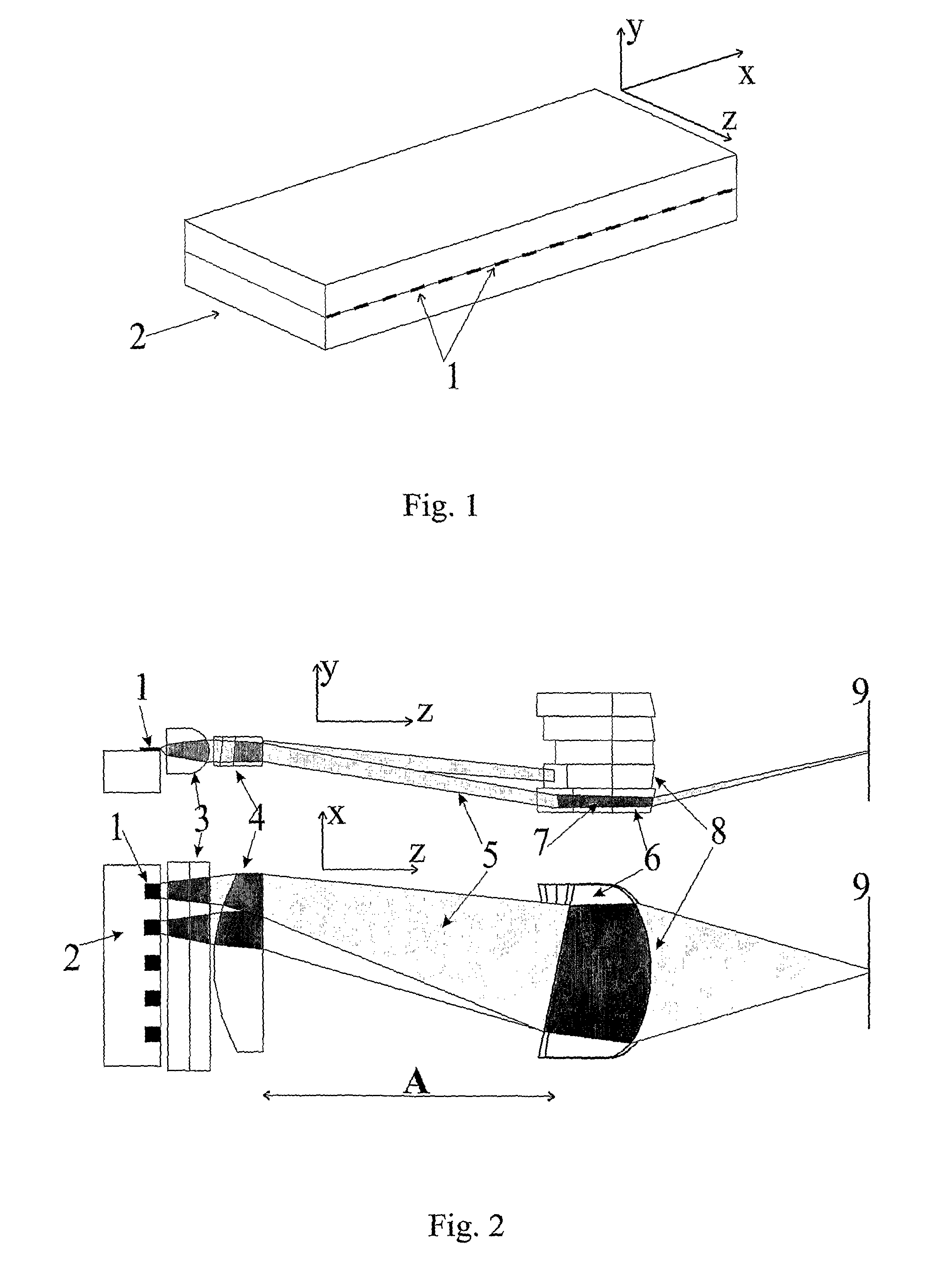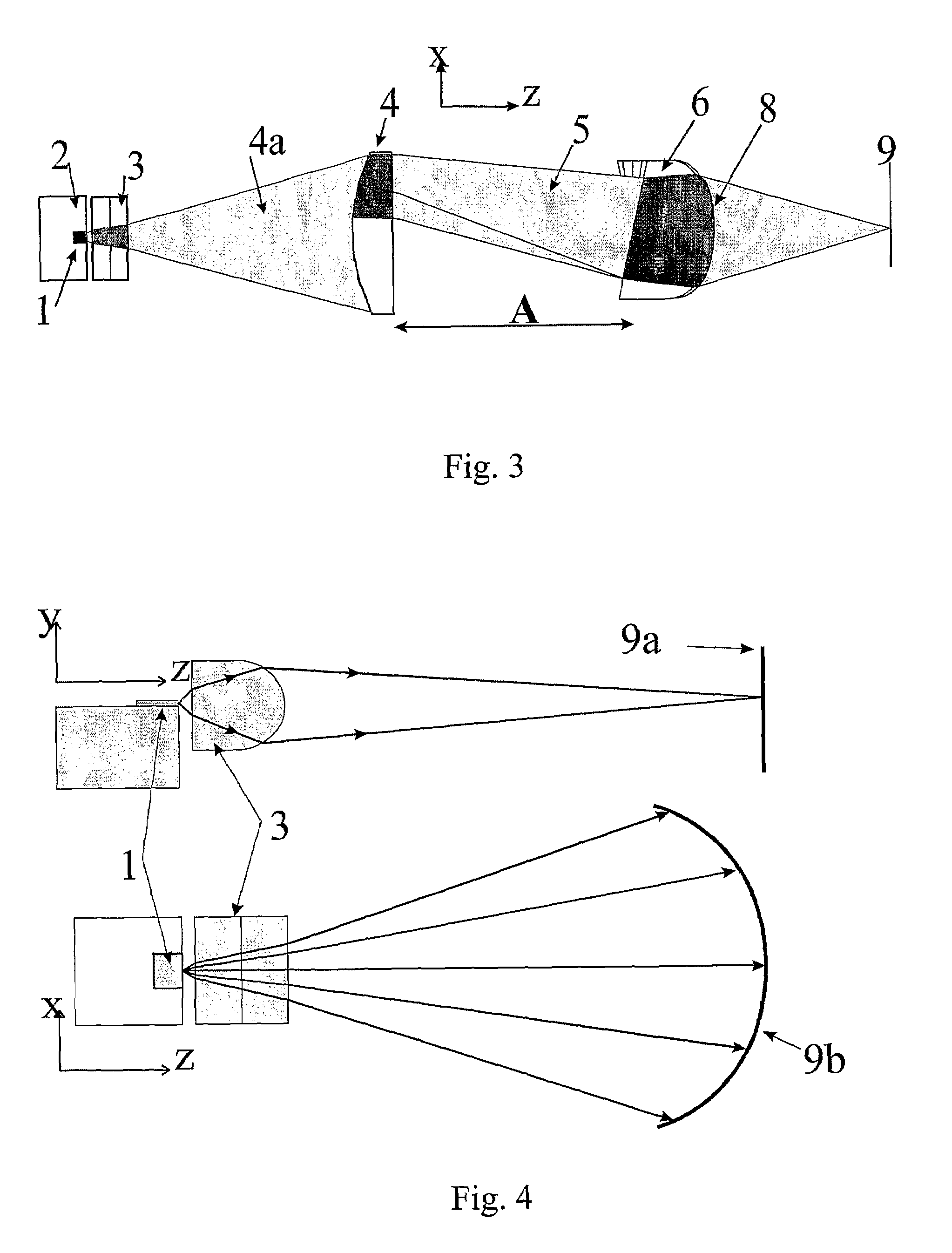Brightness preserving laser beam shaper
a laser beam and beam shaper technology, applied in the direction of lasers, instruments, excitation processes/apparatus, etc., can solve the problems of poor beam shaping methods, difficult application of these, and optics that do not allow the increase of beam brightness
- Summary
- Abstract
- Description
- Claims
- Application Information
AI Technical Summary
Benefits of technology
Problems solved by technology
Method used
Image
Examples
Embodiment Construction
[0019]The FIG. 1 schematically depicts typical laser diode bar 2 with a number of laser diodes 1 radiating in the direction of z-axis. Characteristic dimensions of the bar 2 are as follows: laser height in the direction of y-axis is ˜1 μm, separate laser 1 width is from 50 to 200 μm, the distance between two lasers 1 is from 10 to 500 μm. Laser diode bar radiation in the direction of y (fast) axis varies by 30-50-degree angle, and in that of x (slow) axis it varies by 8-12-degree angle (full width at e−2 level). Beam shaper described in the current invention has been designed to make symmetry on both different modifications laser diode bars 2 and broad aperture laser diode radiation in the direction of x and y-axes, having preserved the brightness of light source.
[0020]In order to simplify the description of beam shaper in following we consider five laser diodes in single bar (FIG. 2). However, the described invention should be related to all light sources emitting similar light bea...
PUM
 Login to View More
Login to View More Abstract
Description
Claims
Application Information
 Login to View More
Login to View More - R&D
- Intellectual Property
- Life Sciences
- Materials
- Tech Scout
- Unparalleled Data Quality
- Higher Quality Content
- 60% Fewer Hallucinations
Browse by: Latest US Patents, China's latest patents, Technical Efficacy Thesaurus, Application Domain, Technology Topic, Popular Technical Reports.
© 2025 PatSnap. All rights reserved.Legal|Privacy policy|Modern Slavery Act Transparency Statement|Sitemap|About US| Contact US: help@patsnap.com



